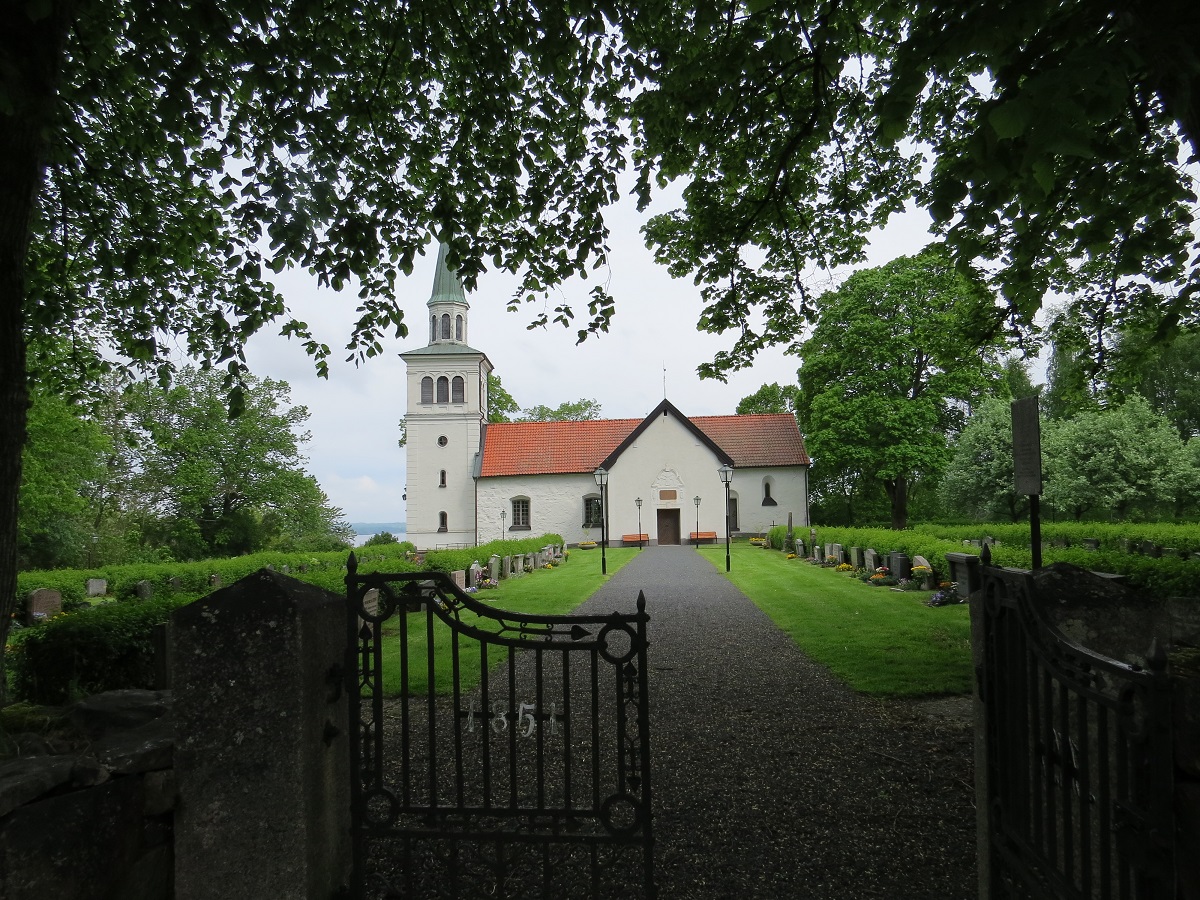One year ago, Dale and I were in Sweden with my parents. During our journey I collected piles of books, pamphlets and postcards but am just now finally getting around to sorting through all of them and seeing what more I can learn about my family’s history. So this will be the first in a series of posts re-examining some of the places we visited. It will be more than just a travelogue, though; I intend to dig a little deeper into other record sources to help interpret what we saw and experienced.
First off is one of the churches we visited. We visited a lot of churches in Sweden. Because we have no known connections to living relatives there, the best we could do to re-connect to our family’s history was to visit the known locations of farms and churches where they lived and worshipped. It turns out that it was quite moving to visit these little churches, knowing that generations of our ancestors had walked the same aisles and had come forward to the same altar to receive communion.

Today we’ll begin a look back at Marbäck church in Jönköping County. This is the church where the Rudeen family came from; at least five generations of Rudeen ancestors worshipped in this little church. But that’s as far back the records go; undoubtedly the family was there for many generations before that. We spent more time in this church than in any other that we visited.
The church is located on the shores of Lake Ralången in Jönköping County. The setting is very rural and peaceful
[flexiblemap center=”57.8594357,14.856747″ marker=”57.8594357,14.856747″ title=”Marbäck Church” width=”100%” zoom=”12″]
Like many of the churches we saw, this one pre-dates the Swedish Reformation of 1527. Therefore, much of the architecture and artwork reflects a time when the congregations were Roman Catholic. Among the changes made right away after Sweden broke from the Roman Catholic Church were to eliminate holy water, incense, adoration of saints, requiem masses and many holy days.
Here is a website with a panoramic video taken from the front of the center aisle of the Marbäck church. It’s an excellent video and truly captures what it’s really like to stand there. You can use the controls to pause the video and to pan sideways or up and down, so don’t miss the ceiling! (Modern technology is so awesome!) According to the church brochure that we picked up, some of the painted frescoes on the ceiling date back to the late-1400’s, meaning that this is pre-Lutheran art. The Swedish National Heritage Board displays a portion of one of the frescoes on its Flickr site, suggesting that this is a significant piece of Swedish cultural heritage.
As you look at the video, watch for the following:
- medieval frescoes on ceiling and arches
- draperies and curtains painted on the walls
- the odd family crest that includes an arm holding a pistol
- the blue cabinet and the black box in front of it
- the pulpit with the ceiling suspended overhead
- a grandmother clock
- a free-standing organ and a pipe organ
There are also some out-of-place modern accoutrements, such as the carpets on the floor in front in the altar area, a baptismal font, a candle holder, and a set of table and chairs that seem to be right out of an Ikea catalog
The older artifacts, however, bear closer inspection and we’ll be looking at them in the next few posts!
Links:
